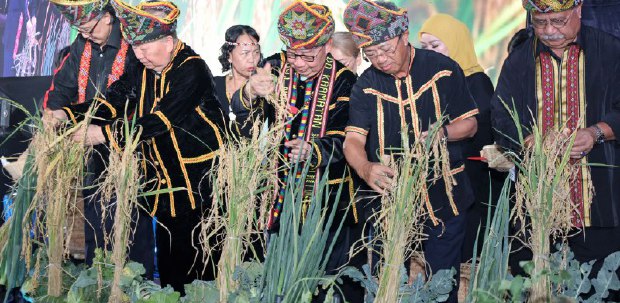ARABLE land is defined by the United Nations Food and Agriculture Organisation (FAO) as land used, or potentially being used, to grow seasonal crops.
This definition excludes land used for pasturing, for tree-farming or for more durable agricultural products such as vineyards, orchards, and coffee and rubber plantations.
In turn, non-arable land can be made arable, for example, by removing forests or tilling pasture land. Some land, such as mountains, tundra or desert, is permanently non-arable.
The increasing food prices in Malaysia is due to a combination of hoarding and the war between Russia and Ukraine.
That's on top of a pandemic where cases can suddenly spike because of sub-variants of the virus that causes Covid-19.
The challenges facing Malaysia are huge as 60 percent of our food is imported. In 2020, the country imported RM55.4 billion (US$12.67 billion) of foodstuffs.
The country is dependent on imports for 88.8 per cent of mutton and 76.4 per cent of beef, which are mostly buffaloes from India.
Malaysia is now importing chicken to fill the void in the market due to the closure of many poultry farms. More imports mean more outflow of ringgit, causing it to weaken further.
Agriculture and Food Industries Minister Datuk Seri Dr Ronald Kiandee said frozen chicken would be imported from Thailand, China and Brazil, even though prices from these countries were higher than other countries, according to industry sources.
The three countries, however, have their own problems, leading to rising prices. Thailand is facing an African swine fever outbreak, leading to a sudden rise in the demand for chicken.
Brazil is also a questionable source, as most Middle Eastern markets have banned its meat and chicken due to doubts over halal integrity.
The high price of Thai chicken was acknowledged by Veterinary Services director-general Dr Norlizan Mohd Noor, who is responsible for issuing approved permits for importing chicken into Malaysia.
Even though the Agriculture and Food Industries Ministry has launched capacity-development programmes like the Young Agropreneur Programme and My Future Agro, the perception of farming among locals is very low.
Most have been conditioned to aspire to work in the corporate or government sector. This is in great contrast to Thailand, where many smallholders have degrees in agriculture and business, and operate their farms as businesses.
State governments are doing very little to allocate land for food production. Currently, 103,563 ha of farmland are abandoned, making up 46,382 lots in 2019 that couldn't be utilised due to ownership issues. This doesn't include idle or unused land in the hands of the authorities.
Then, there is the rise in the price of fertiliser, which is a global phenomenon. It hits the United States just as badly as it affects the United Kingdom, Europe and Africa, triggered by the Russian invasion of Ukraine on Feb 24.
Even Israel and the Arab world import 40 to 50 per cent of their food from Ukraine, which is famous for the high quality of its mineral-rich "black soil".
In Europe, farmers said they were likely to offset the price rises by buying less fertiliser than usual this season for cereal crops, potentially leading to lower production at a time when there is a threat to supplies from Ukraine.
Although Asians don't consume much wheat, oats, barley, corn and other cereals, these are things which Malaysia imports as animal feed.
Therefore, Malaysian producers and consumers will also face imported agricultural and fertiliser inflation.
This is happening because Malaysia has overemphasised the importance of manufacturing rather than ensuring a stable supply of locally produced food
What can Malaysia do? We need comprehensive food security policies, now.
The writer is the president and CEO of think tank EMIR Research





